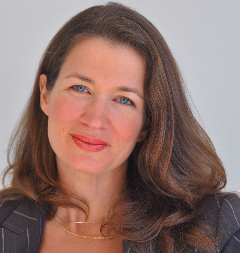One of many things I love about conducting weddings in Toronto is that there is a good chance that the city’s multicultural landscape and energy will be reflected in the couples that decide to marry. Indeed many of the couples I work with bring two very different, often hybridized cultural, religious, linguistic and spiritual histories to their relationship. Part of the joy for me as a Humanist officiant, committed to finding ways to celebrate, honour and respect diversity, is to be able to find ways to help them incorporate those different histories into their ceremonies. What is equally exciting then are the ways in which many couples today approach or think about those wedding traditions and rituals. Chances are if they are choosing a Humanist wedding, then they want a more modern approach and that often means they feel they need to forgo old traditions. Instead, however, we have found ways to bridge those divides between traditional and modern, old and new – in ways that respect our rich heritage but also feel meaningful in a contemporary environment.
So, I thought I would share two beautiful rituals that I built with a couple in a recent wedding to show how this can be done – particularly if you are working with an officiant that works to personalize weddings as I do. One half of the couple was Greek Orthodox and the other half was Jewish. In addition to a “loving cup†or “cup of life†wine ceremony that crosses religious and cultural lines, we included some alternative approaches to the breaking of the glass, which comes from the Jewish tradition and the Stefana or crowning ceremony, which comes from the Greek Orthodox tradition.
In this particular case, we talked about the glass symbolizing, among other things, the fragility of human relationships. However, this couple (and others) decided instead of having only the man break the glass, as is the case in Jewish tradition, that both the man and the woman (in this case) would break a glass each or together, break a single glass. In the case of the Stefana ceremony, the couple is crowned as king and queen of their home – a home they will rule or govern (as I like to say) with justice, integrity and wisdom. It is also symbolic of the new phase of the couple’s relationship. The crowns are connected with a ribbon, symbolizing that connectedness. Traditionally in these ceremonies, it is the priest who places the Stefana on the heads of the couples and then moves them back and forth three times. Given that we were doing a cross-cultural, Humanist ceremony, we decided the crowns still had much symbolic meaning for the couple and their families, but instead we asked their near and dear friends to do the honours. It was not only a way to include the ritual but to honour some of their most special friends – an honour which of course can also be given to family. Either way, it’s important to see how a more contemporary approach to wedding ceremonies does not have to mean the end of wedding traditions and rituals. It could mean however, the remaking and building of new rituals and traditions that respect the past as well as the couple’s present.
-

Cortney Pasternak
Cortney Pasternak is licensed by the Registrar General of Ontario and the Ontario Humanist Society to provide Humanist (similar to civil or legal) marriage ceremonies in Ontario (though she is happy to officiate at many other life cycle events as well). She has been screened and trained by the Ontario Humanist Society, which is a vibrant, dynamic and growing organization. More about Cortney →
Pages
- About Cortney
- Contact
- Cortney Pasternak | Licensed Wedding Officiant
- Dating Therapy / Dating Coaching
- Frequently Asked Questions
- Locations
- Marriage Prep / Pre-marital Counselling
- Marriage Preparation and Pre-Marriage Counseling
- Message Sent
- Niagara
- Officiant for Hamilton Weddings
- Other Ceremonies
- Sample Wedding Ceremonies
- Ten Guiding Principles of Humanism
- Testimonials
- Toronto
- West GTA
